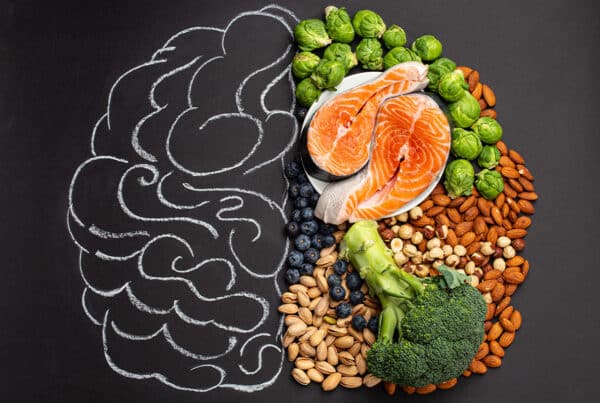Scientific research conducted over the past ten years by Federal agencies such as NIDA, NIAAA and SAMHSA as well as other private research organizations have led to a consensus that addictive disease is a chronic disease with similarities to diseases such as asthma, hypertension and diabetes.
Ronald J. Hunsicker
D. Min., FACATA
President/CEO
National Association of Addiction Treatment Providers
30 years ago the scientific and medical communities didn’t know as much about addiction and the brain as they do today. Part of what we’ve learned is that for millions of people, overcoming addiction is not about a lack of will power, a lack of faith, or a lack of discipline. It’s about their brains being literally injured and their brain chemistry being physically altered.
This has led the scientific community, along with NIDA and numerous other agencies and organizations, to acknowledge drug and alcohol addiction as a chronic and progressive brain disease. And that means that treating addiction will require medicine, just like any other disease. Therapy is necessary for recovery, but it’s not going to heal your brain…which is one of the reasons why so many people struggle and relapse.
What would happen to a diabetic if they decided to stop taking medicine? Or decided to start eating sugar again? They would lapse into a diabetic coma because their bodies cannot process sugar. It’s basically the same for an addict. There is a section of your brain that is injured. It cannot function properly with alcohol or drugs in your system. There are medications that can help your brain “disconnect” from those harmful desires or patterns and then promote the regeneration of the damaged parts.
Once your brain begins to heal, we can start to work through your unique set of underlying personal and family issues, along with the related triggers that contribute to your addiction behaviors. As your brain rebalances, you will be better able to absorb, process and (most importantly) retain the new behavioral patterns that the therapies will provide.
But it all begins with getting your brain rebalanced and ready, not with making your willpower stronger.
Recent advancements in MRIs, diagnostic tools and other mapping technologies have enabled doctors to view, study and analyze addiction, the brain and how the two are related. Science has helped us become smarter about how the brain and hot it is affected by various substances and circumstances.
According to the American Medical Association, National Institute on Drug Abuse (NIDA), The National Institutes of Health, The World Health Organization, The American Psychiatric Association and numerous other organizations in the scientific and medical fields, addiction is now known to be a chronic and progressive brain disease that attacks and damages key parts of the limbic system and cerebral cortex, which in turn results in compulsive cravings, obsessive seeking, and irrational overuse despite harmful and often devastating consequences.
Addiction is considered a brain disease because alcohol and drugs literally change the brain chemically, structurally and functionally. While it’s true that for most people the initial decision to partake of alcohol or drugs is voluntary, over time these substances literally change numerous aspects of the brain to the point where the individual cannot stop using or drinking even if the desire to do so is high.
The Brain and Cravings
To understand how alcohol and drugs change the brain, one must first have a general understanding of the brain itself. It is a somewhat daunting task since the brain is very complex. The brain has a series of interrelated systems that control how our bodies work, react, move, think and feel.
The limbic system is responsible for controlling various functions of the body, including many of our emotions, cravings and motivations, particularly those that are related to our well-being and/or survival (perceived or actual). The limbic system is also involved in intense feelings, such as those of pleasure, pain and relief. The limbic system is buried deep in the center of the brain.
The cerebral cortex, often called the gray matter, is involved in critical thinking and reasoning. As such, it’s the cerebral cortex that limits our primitive drives and constitutes “self-control,” providing a sort of check-and-balance mechanism for our emotions, making us civilized in behaviors and adaptable socially.
When a (limbic) craving to drink or use drugs exceeds the desire to use self-control or abstinence, even when the person is aware of “logical” negative consequences (cortex), there is conflict. The brain wants to resolve the conflict, but prior substance abuse has damaged the cerebral cortex’s ability to reason through the decision. The limbic portion reads this indecision and takes advantage of it by hijacking the decision process and winning out with whatever it is wanting in the moment.
Traditional therapy-based treatments address the “thinking” cerebral cortex of the brain but do little to influence the “emotional” and somewhat “rogue” limbic system. Until recently, there was no way to reach and/or treat the limbic system where urges and cravings originate. This meant that although an addict might understand and embrace the logical argument that getting drunk or high is harmful, the emotionally driven urges made it virtually impossible to “just say no.”
These emotionally driven (limbic) cues manifest themselves as physical urges or compulsions to drink or use. Generated in the brain and experienced literally and physically, we call these urges “cravings.” Alcohol and drug use generate euphoria, or “a high,” by activating dopamine, a neurotransmitter in the brain. As the cortex gives into the limbic more and more, the brain then begins to “associate” these behaviors (using, drinking, etc.) with the environment and situation surrounding the behavior and with the euphoric feelings produced by the same.
As addiction deepens, the substances become less of an added positive or euphoric experience and more of a necessity for the brain (and the abuser) merely to feel “normal.” And when denied this “normalcy,” the brain starts demanding the substance to the point of overriding all other systems, especially the “logical” (cortex) ones.
The Brain and Triggers
Long-term alcohol or drug abuse also changes other brain chemical systems that control the ability to learn, remember and to exert control over one’s behavior. With repeated abuse, a type of reactionary conditioning (or non-conscious memory formation) occurs in which a person becomes highly sensitive to environmental cues associated with substance use. These cues can include people, places, events or even moods linked to the experience. They can trigger uncontrollable cravings, even when the substance itself is not available and lead to relapse in formerly abstinent abusers.
All of the changes that take place in the brain from repeated exposure to alcohol or drugs constitute addiction. Advanced imaging studies of addicted brains clearly show such changes in brain areas critical to judgment, decision-making, learning, memory and behavior control.
These changes are what drive an abuser to seek out and take substances compulsively, despite the catastrophic adverse consequences.
Brain MRIs Depict Addiction Effects
You should take great comfort in the fact that these same studies show how the human brain can “heal” itself when given the proper medicines and sufficient time. In as little as 90 days, science has shown, great strides can be made in the brain’s chemical balance and functioning, and as much as 70% to 90% healing of an addict’s brain is possible over a year or two.
As an addict (or someone who cares about one), this should be comforting because it is evidence that the addict’s brain has been chemically and neurologically altered, and as a result of that alteration it works, functions and processes differently.
Why is this comforting? Because it’s physically impossible for addicts to control how their brain functions when in the presence of certain “triggers”… a picture, a place, a circumstance, a feeling or mood. And if you can’t control it, you can’t fix it with sheer willpower or discipline. You might be able to avoid it for a while, but that’s only temporary and not the same as fixing it.
Your brain needs anti-addiction medicines to rebalance its chemistry and to help circumvent those pathways so it can reboot that area, rewire those neurons, and then begin to recover/heal to its pre-addictive state.
And at Enterhealth, we have the science and the means to help you do just that.
To learn more about Enterhealth’s Residential or Outpatient drug and alcohol rehabilitation programs, call 1.800.388.4601 or contact us using this form to talk to your trusted advisor, today!



